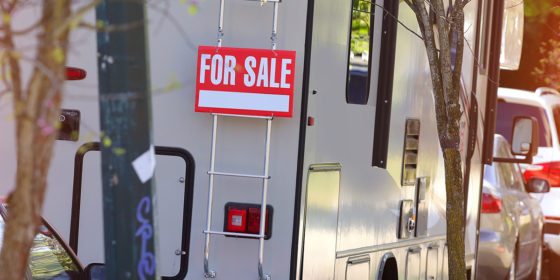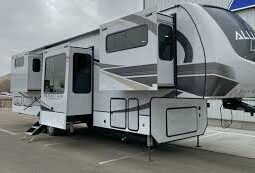Red Flags to Watch for When Purchasing an RV Online
4 min read
If you’re ready to hit the highway, but haven’t found the perfect rig yet, online listings are a great place to start. Buying online helps you narrow down your choices, compare listings, and find the best RV to suit your lifestyle. However, you need to take precautions and watch for misleading listings and potential scams. To help you safeguard against seller subterfuge, RVT is sharing six red flags to watch for when purchasing an RV online.
Listing is Vague
Be cautious about listings that lack information about the unit. To sell their RV quickly, and for the best price, sellers should be sharing as much as possible about its features. Critical listing details include the year, make, model, length, price, type, and condition, at the very least. If the seller doesn’t seem to know much about the unit, or have any experience with RVing, that should raise a red flag. A legitimate seller should be very familiar with their rig and be able to answer any questions about it.
Unusually Low Listing Price
Some deals may seem too good to be true—and often are. Before you start contacting sellers, compare listings on RVT.com to get an idea of the typical listing price for the make and model you’re considering. If a seller has listed their toy hauler or other RV for an unusually low price, be wary. Some unscrupulous sellers will tell a fictional story to justify their need to unload the RV quickly at such a low price, such as unexpectedly moving out of the country, or needing to sell it for an absent friend. While that could be the case, most honest sellers want to get as much as they can for their RV and won’t list for substantially less than comparable units.
Lack of Vehicle Maintenance Records
Records of regular maintenance, repairs, and upgrades should be available for you to view. If they can’t provide any documentation, that should raise a red flag. While they may not have kept track of every item they’ve maintained or upgraded, they should have some proof that routine maintenance and repairs have been completed. If a third party has done the work, the seller should be able to show a paper trail. If they’ve done the work themselves, they may not have all the receipts, but they should be able to give you a timeline of when things have been done. For instance, the owner should be able to tell you the last time they checked/repaired the seals on their RV, whether there has been water damage, or when the tires were last changed. If the seller seems evasive, choose a different RV.
Difficult Seller
If the seller is reluctant to answer questions, seems uncertain, or is argumentative, consider walking away. If you are genuinely interested in a unit, a legitimate, motivated seller should be happy to answer all your questions, offer a tour of the unit, and be forthcoming about any issues with the RV. You should feel comfortable with and trust the person you’re buying from. If something doesn’t feel right, go elsewhere.
Won’t Permit A Third-Party Inspection
Big red flag here. It’s best practice to have big-ticket items like an RV inspected by a third party to ensure there aren’t any hidden issues. If the owner won’t permit you to have the unit inspected, choose a different RV. They may be trying to hide a serious issue, or are concerned about what an inspection might unearth. If that’s the case, they probably aren’t the type of seller you want to deal with.
Requires a Deposit
A private seller should never require a deposit. When you get to the actual purchase stage, you need to be completely comfortable with the person you’re buying from. Money should not change hands until that point. If anything makes you hesitate, you’re better off going elsewhere. Your seller also shouldn’t require a cash-only sale. Big-ticket purchases should always have a clear paper trail. Pay only by certified check, and have the seller accompany you to the DMV to sign over the title and receive payment.
As you look for your next RV, keep those red flags in mind to help you avoid getting taken for an unpleasant ride—whether you’re planning to buy from a dealer or private seller. If purchasing privately, it’s best not to buy it sight unseen. Make sure you look at the RV in person to ensure there is an RV and that it suits your lifestyle. Check all systems, open and close slideouts, and take the unit for a test drive to make sure it operates properly. Always do a third-party inspection, but keep these signs of a poorly maintained RV in mind as you walk through the RV:
Bubbled wallpaper – indicates water damage
A moldy or mildewy smell – could also be a sign of water damage
Warping, sagging, and water stains
Loose or missing seals around windows, doors, skylights and other openings
Cracked or worn caulking
Visible damage on slideouts, such as cracks or dents
A dirty or poorly maintained awning—this could indicate the RV has been similarly cared for
We hope these tips help as you hunt for your first, or next, RV. Interested in more resources as you search for the perfect RV? Check out the RV reviews from actual owners at RVInsider.com. Consumer reviews tend to be brutally honest, helping you gain insight about the positives and negatives owners have encountered with the make or model you’re looking at.
Unsure how to begin searching for an RV on RVT? Check out these tips on how to find the right RV using RVT’s search filters.



